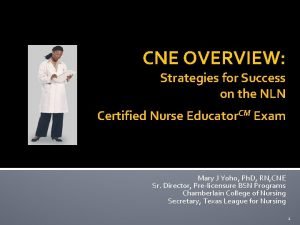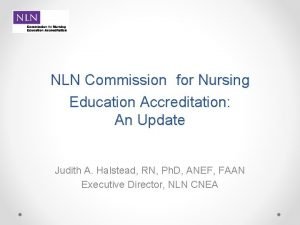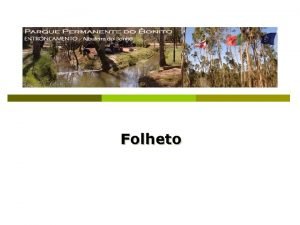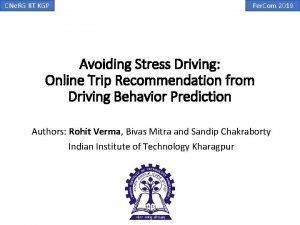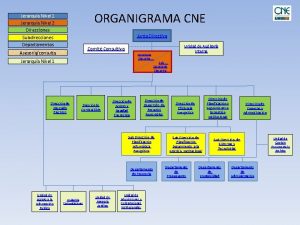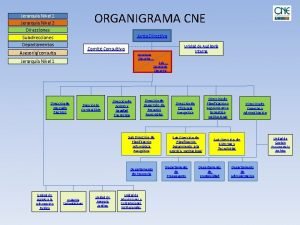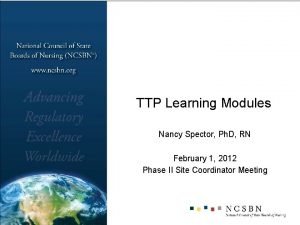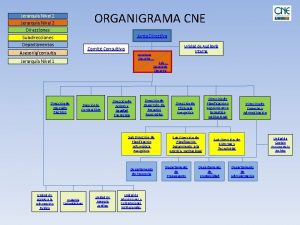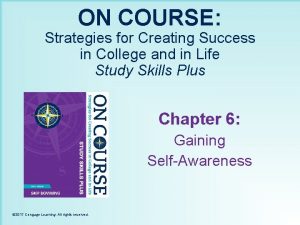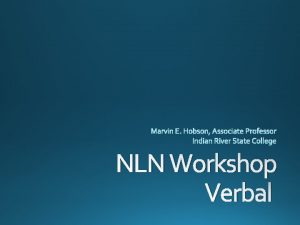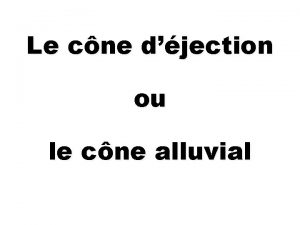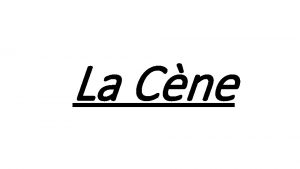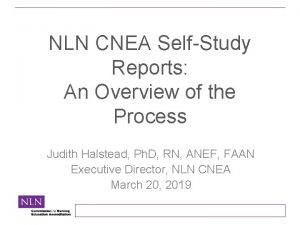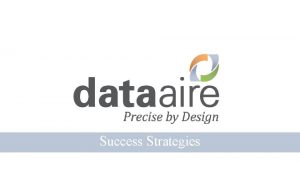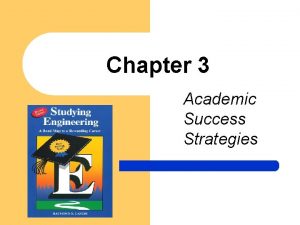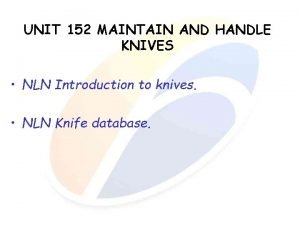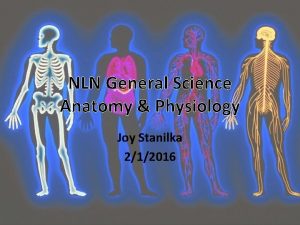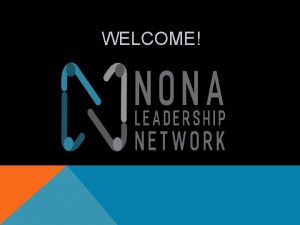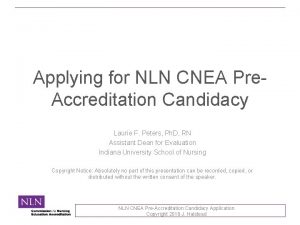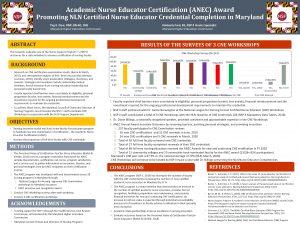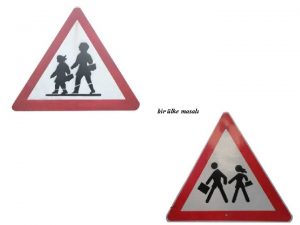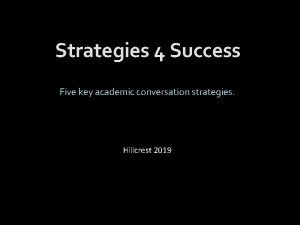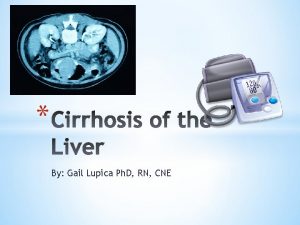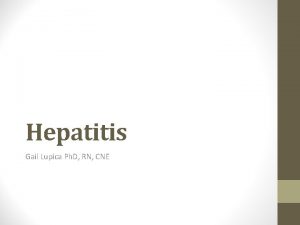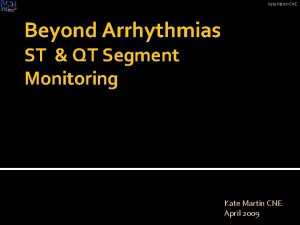CNE OVERVIEW Strategies for Success on the NLN















































- Slides: 47

CNE OVERVIEW: Strategies for Success on the NLN Certified Nurse Educator. CM Exam Mary J Yoho, Ph. D, RN, CNE Sr. Director, Pre-licensure BSN Programs Chamberlain College of Nursing Secretary, Texas League for Nursing 1

Purpose Examine the competencies for the Certified Nurse Educator. CM examination and strategies for success. These competencies distinguish the excellence that is necessary for a nurse educator to obtain national recognition through certification. The specialized core knowledge, skills, and abilities essential to be an effective educator will be explored. The roles and responsibilities of the nurse educator in creating a learning environment in which student learning and achievement of outcomes is facilitated will also be investigated. 2

Objectives Upon completion of this program participants will be able to: 1. Discuss the eligibility required for the Certified Nurse Educator. CM Exam 2. Explore major content areas included in the Certified Nurse Educator. CM Test Blueprint. 3. Discuss the Certified Nurse Educator. CM assessment and types of questions on the exam 4. Describe the process for Certified Nurse Educator. CM Renewal 5. List references prepare faculty for success on the Certified Nurse Educator. CM exam

CNE Test Blueprint 1. Facilitate Learning 22% 2. Facilitate Learner Development and Socialization 14% 3. Use Assessment and Evaluation Strategies 17% 4. Participate in Curriculum Design and Evaluation of Program Outcomes 17% 5. Pursue Continuous Quality Improvement in the Academic Nurse Educator Role 9% 6. Engage in Scholarship, Service and Leadership A Function as a Change Agent and Leader 21% B Engage in Scholarship of Teaching C Function Effectively within the Institutional Environment & Academic Community 4

1. Facilitate Learning � Teaching strategies � Learning styles � Information technology � Communication � Reflective thinking � Critical thinking � CNE Test Blueprint: 22% of questions 5

2. Facilitate Learner Development and Socialization � Learning styles and unique learning needs Includes traditional/non-traditional, culturally diverse, and at -risk students � Creating learning environments that facilitate learning � Cognitive, psychomotor, affective domains � CNE Test Blueprint: 14% of questions 6

3. Use Assessment and Evaluation Strategies � Developing nursing program standards and policies � Strategies to assess and evaluate learning in the three domains � Appropriate assessment instruments � Analyzing assessment and evaluative data � CNE Test Blueprint: 17% of questions 7

4. Participate in Curriculum Design and Evaluation of Program Outcomes � Design and revise curriculum to reflect the institutional philosophy and mission � Implement curriculum using change theories and strategies � Design courses to reflect philosophical and theoretical framework of the curriculum � CNE Test Blueprint: 17% of questions 8

5. Pursue Continuous Quality Improvement in the Academic Nurse Educator Role � Promoting your own socialization to the role � Professional organization membership � Lifelong learning � Using feedback of peers, self, learners, and administration � CNE Test Blueprint: 9% of questions 9

6. Engage in Scholarship, Service, and Leadership � Divided into 3 subsections: 21% Function as a Change Agent and Leader Engage in Scholarship of Teaching Function Effectively within the Institutional Environment and the Academic Community 10

Eligibility � Option A: Must meet criteria 1 & 2 � Licensure � Education � A currently active unencumbered registered nurse designation in the country where currently practicing as a nurse educator a master's or doctoral degree in nursing with a major emphasis in nursing education or a master's or doctoral degree in nursing plus a post-master's certificate in nursing education or master's or doctoral degree in nursing and nine or more credit hours of graduate-level education courses* Examples of acceptable courses include: Curriculum Development and Evaluation; Instructional Design; Principles of Adult Learning; Assessment/Measurement & Evaluation; Principles of Teaching and Learning, Instructional Technology Note: Graduate-level research or statistics courses do not count toward this requirement 11

Eligibility � Option B: Must meet criteria 1, 2 & 3 Licensure A currently active, unencumbered registered nurse license in the country where currently practicing as a nurse educator. � Education A master's or doctoral degree in nursing (with a major emphasis in a role other than nursing education). � Experience Two years or more employment in a nursing program in an academic institution � within the past five years. � All eligibility criteria for initial certification must be met at the time of application. 12

Eligibility NLN membership is not a requirement for taking the CNE examination, however, there are many benefits associated with NLN membership. Please be aware that if you are a faculty member employed in an agency member school you have full NLN membership benefits 13

The CNE Exam--details � Exams include 150 items 20 are being tested/pilot items No alternate format items…yet! � Need 94 -95 correct to pass � Cognitive levels of items include Recall: tests the recognition or recall of information; memorization of facts Application: tests the simple interpretation or application of limited data; applying ideas, rules of procedure, methods, formulae, principles, and theories in job-related situations; implementation Analysis: tests ability to analyze and synthesize information, determine solutions, and evaluate the usefulness of a solution. 14

The Detailed Test Blueprint http: //www. nln. org/facultycertification/ handbook/index. htm �This is available at no cost as a downloadable pdf file.

Testing Fees � $400 NLN Members � $500 Non-members � Re-test: � $350 NLN Members � $450 Non-members 16

Self-Assessment Examination (SAE) � NLN provides a practice exam that you can purchase $59. 95 for NLN members $74. 95 for non-members � Access as often as you’d like for 60 days OR until you submit your answers � Can submit answers for two score reports: # of correct responses in each of 6 content areas Mastery report for each of the 6 content areas 17

Current CNE Pass Rates, 2016 April-June, 2016 (2 nd Qtr) First Time Testers 144 Pass Rate: 57. 6% Year-to-Date (2016) First Time Testers 264 Pass Rate: 61% 18

CNE Renewal � Every 5 years, December 31 st � Take CNE exam or develop a portfolio � Portfolio Relates to 5 of the NLN Core Competencies of Nurse Educators � Retired CMEs have CNE for Life! � Demonstrate 50 credits � List activities Program evaluation Develop a curriculum Committee participation 19

CNE Exam Questions � Moved to International testing � No Alternate Format questions – yet! � Situational, action-oriented questions � Example on the NLN website � Forms 13 and 14 will launch in December 2016 � New protocol analysis conducted for the CNE program � New NLN Core Competency of Nurse Advocate 20

Nine-tenths of education is encouragement. --Anatole France Examples of CNE Major Topic Areas

What defines an Effective Teacher? � The effective teacher is responsible for creating an environment in classroom, laboratory, and clinical settings that facilitate student learning and the achievement of desired cognitive, affective, and psychomotor outcomes. � The effective teacher guides student to see how their thought processes occur. � The effective teacher possess content expertise, creates an active learning environment and uses carefully selected teaching strategies. � The effective teacher is knowledgeable and insightful. 22

Good attributes for educators � Knowledge of nursing practice � Knowledge of nursing theory � Knowledge of teaching � Positive attitude � Encouraging manner � Organization and prioritization � Being a primary resource Being available and approachable � Managing grading & paperwork � Keeping students appropriately challenged 23

Philosophy � Beliefs of the faculty about nursing and education � Beliefs of the faculty about patients, health, and the person/environment interaction � Statements about what the entire program intends to accomplish � The cornerstone for curriculum development and evaluation � Always look at philosophy and reaffirm beliefs before revising curriculum

Conceptual Framework � Gives structure to the curriculum � Provides a blueprint for everything that is included in the curriculum � Interrelates or threads significant concepts in the curriculum � Provides a rationale for the curriculum

Overview: Learning Theories ▪ Adult learning theory ▪ Behaviorism ▪ Constructivism ▪ Cognitive development theories ▪ Experiential learning/humanism ▪ Other learning theories 26

Learning Domains � Cognitive – understanding, knowing � Affective – attitudes, motivation, feelings, and values. The expression of these often involves statements of opinions or beliefs, or an assessment of worth. � Psychomotor – learners might physically demonstrate a skill.

VARK Fleming & Mills Learning Styles Model 28

Overview: Teaching Strategies lecture, debate, case study cooperative/collaborative learning narrative pedagogy/dialogue/peer sharing/storytelling games, imagery, learning contract concept mapping/mind mapping portfolio, posters, advanced organizers one minute paper, muddiest point, journaling/clinical logs self-learning modules, writing simulation, role playing, analogy 29

Assessment and Evaluation Strategies � Analyze assessment and evaluation data. � Use assessment and evaluation data to enhance the teaching-learning process � Use existing evaluation tools for assessing clinical practice and educational outcomes. � Evaluate available resources for learner assessment and evaluation. � Select appropriate assessment instruments. � Implement evaluation strategies that are appropriate to the learner and learning outcomes. � Design tools for assessing clinical practice. 30

Leaders as Change Agents � A change in one part affects other parts � People affected by the change should participate in making the change � Inform all of the reasons for change Provide concrete & specific feedback about the change process � Seeking input for all about implementation of change � Conflict may occur during the change process

Information Technology � Faculty must keep up Change from teaching f 2 f with faculty providing information to passive audience to… Teaching in a variety of settings using a variety of methods, many of them electronic ▪ Mobile devices (Smartphones, PDAs) ▪ Podcasting or videocasting ▪ Clicker technology ▪ Wikis ▪ Second Life ▪ Simulation

Professional memberships � Many are members, but not so many are active members � Membership is one way to satisfy service requirements Be a committee member Be a committee chair Participate on a task force

Question Examples 34

Question 1 A nurse educator recognizes that a student who is a visual learner would prefer which assignments? A. Watch a movie and discuss it with the class. B. Read a textbook and write an essay. C. Create a concept map using a computer. D. Perform the skill in a simulation lab. 35

Answer 1 A nurse educator recognizes that a student who is a visual learner would prefer which assignments? A. Watch a movie and discuss it with the class. B. Read a textbook and write an essay. C. Create a concept map using a computer. D. Perform the skill in a simulation lab. 36

Question 2 Which statement made by the nurse educator demonstrates understanding of test item analysis? A. I wonder if the content for this item is clearly noted in the assigned readings. B. It seems that option ‘E’ is the only option that does not need to be revised. C. I need to collect more data on this item before an assumption can be made. D. I should refrain from testing this content on future examinations. 37

Answer 2 Which statement made by the nurse educator demonstrates understanding of test item analysis? A. I wonder if the content for this item is clearly noted in the assigned readings. B. It seems that option ‘E’ is the only option that does not need to be revised. C. I need to collect more data on this item before an assumption can be made. D. I should refrain from testing this content on future examinations. 38

Question 3 An item analysis report for a multiple-choice exam revealed that the Split Half Coefficient was 0. 80. Based on this statistic, which interpretation can be made regarding this exam? A. The exam is reliable in measuring student knowledge of the material. B. There are too few items on the exam. C. The items are poorly written and do not discriminate. D. There is an excess of very easy questions. 39

Answer 3 An item analysis report for a multiple-choice exam revealed that the Split Half Coefficient was 0. 80. Based on this statistic, which interpretation can be made regarding this exam? A. The exam is reliable in measuring student knowledge of the material. B. There are too few items on the exam. C. The items are poorly written and do not discriminate. D. There is an excess of very easy questions. 40

Question 4 A nurse educator is reviewing program evaluation data. A benchmark indicating that 85% of learners will pass the NCLEX® exam on the first attempt has not been met for the past two years. Which is the priority recommendation for the nurse educator to make? a. Lower the NCLEX® pass rate benchmark to 80% b. Implement an exit exam prior to graduation c. Evaluate the nursing program’s curriculum d. Increase the passing grade for each nursing course to 85%

Answer 4 A nurse educator is reviewing program evaluation data. A benchmark indicating that 85% of learners will pass the NCLEX® exam on the first attempt has not been met for the past two years. Which is the priority recommendation for the nurse educator to make? a. Lower the NCLEX® pass rate benchmark to 80% b. Implement an exit exam prior to graduation c. Evaluate the nursing program’s curriculum d. Increase the passing grade for each nursing course to 85%

Question 5 The nursing curriculum committee is revising the curriculum to be more congruent with changes in health care delivery. Which should be the most important consideration of the committee? A. Be sure the new curriculum is aligned with the mission and philosophy of the governing institution. B. Develop curriculum objectives and program outcomes. C. Establish benchmarks for first time pass rates on the NCLEX-RN exam. D. Require a standardized exit exam with a benchmark passing rate of 85%.

Answer 5 The nursing curriculum committee is revising the curriculum to be more congruent with changes in health care delivery. Which should be the most important consideration of the committee? A. Be sure the new curriculum is aligned with the mission and philosophy of the governing institution. B. Develop curriculum objectives and program outcomes. C. Establish benchmarks for first time pass rates on the NCLEX-RN exam. D. Require a standardized exit exam with a benchmark passing rate of 85%.

References � Caputi, L. (2014). NLN's Certified Nurse Educator Review: The Official National League for Nursing Guide. Lippincott Williams & Wilkins. � National League for Nursing (NLN). (2015). Certified nurse educator (CNE) candidate handbook. New York: Author. � National League for Nursing (2016). Core competencies of nurse educators. Retrieved from http: //www. nln. org/professional-developmentprograms/competencies-for-nursing-education/nurseeducator-core-competency 45

CNE Certification Research � � � Hagler, D. , Poindexter, K. , & Lindell, D. (2014). Integrating your experience and opportunities to prepare for nurse educator certification. Nurse Educator, 39(1), 45 -48. doi: 10. 1097/NNE. 000000002 Kalb, K. A. (2008). Core competencies of nurse educators: Inspiring excellence in nurse educator practice. Nursing Education Perspectives, 29(4), 217 -219. Lundeen, J. D. (2014). Analysis of unsuccessful candidate performance on the Certified Nurse Educator examination (Unpublished doctoral dissertation). The University of Alabama, Tuscaloosa, AL. National League for Nursing. (2007). Development of the core competencies of nurse educators. In J. A. Halstead (Ed. ), Nurse educator competencies: Creating an evidence-based practice for nurse educators (pp. 11 -16). New York, NY: Author. Ortelli, T. (2008). Headlines from the NLN. Characteristics of candidates who have taken the certified nurse educator (CNE) examination: A two-year review. Nursing Education Perspectives, 29(2), 120 -121. Ortelli, T. A. (2012). Evaluating the knowledge of those who teach: An analysis of candidates’ performance on the Certified Nurse Educator (CNE) examination (Unpublished doctoral dissertation). Nova Southeastern University, Fort Lauderdale-Davie, FL. 46

Questions and Discussion 47
 Nln cne exam
Nln cne exam Nln accreditation standards
Nln accreditation standards Your child's success or lack of success
Your child's success or lack of success Your child's success or lack of success
Your child's success or lack of success Parque do bonito entroncamento cne
Parque do bonito entroncamento cne Cne
Cne Cne point
Cne point Cne
Cne Organigrama cne
Organigrama cne Jerarqua
Jerarqua Spector cne
Spector cne Organigrama cne
Organigrama cne Cne organigrama
Cne organigrama Inner defender and inner guide examples
Inner defender and inner guide examples On course strategies for creating success in college
On course strategies for creating success in college Toppslätskivling effekt
Toppslätskivling effekt Elektronik för barn
Elektronik för barn Personalliggare bygg undantag
Personalliggare bygg undantag Borra hål för knoppar
Borra hål för knoppar Smärtskolan kunskap för livet
Smärtskolan kunskap för livet Bris för vuxna
Bris för vuxna Mat för unga idrottare
Mat för unga idrottare Ledarskapsteorier
Ledarskapsteorier Trög för kemist
Trög för kemist Argument för teckenspråk som minoritetsspråk
Argument för teckenspråk som minoritetsspråk Ellika andolf
Ellika andolf Datorkunskap för nybörjare
Datorkunskap för nybörjare Vad står k.r.å.k.a.n för
Vad står k.r.å.k.a.n för Steg för steg rita
Steg för steg rita Redogör för vad psykologi är
Redogör för vad psykologi är Geometri för barn
Geometri för barn Bästa kameran för astrofoto
Bästa kameran för astrofoto Nyckelkompetenser för livslångt lärande
Nyckelkompetenser för livslångt lärande Publik sektor
Publik sektor Bunden form
Bunden form Personlig tidbok för yrkesförare
Personlig tidbok för yrkesförare Mantel för kvinnor i antikens rom
Mantel för kvinnor i antikens rom Fspos
Fspos Vilken grundregel finns det för tronföljden i sverige?
Vilken grundregel finns det för tronföljden i sverige? Verktyg för automatisering av utbetalningar
Verktyg för automatisering av utbetalningar Ministerstyre för och nackdelar
Ministerstyre för och nackdelar Jätte råtta
Jätte råtta Plats för toran ark
Plats för toran ark Expektans
Expektans Tillitsbaserad ledning
Tillitsbaserad ledning Romarriket tidslinje
Romarriket tidslinje Boverket ka
Boverket ka Modell för handledningsprocess
Modell för handledningsprocess
